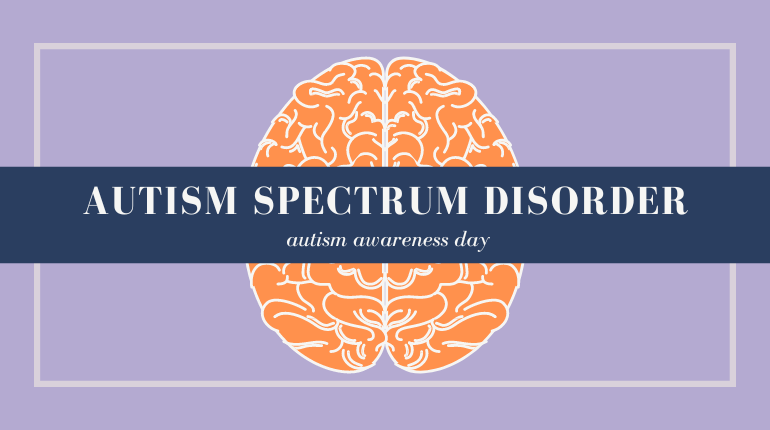Technology and autism's friend or enemy?
- Home
- Technology and autism's friend or enemy?

Autism spectrum disorder (ASD), also called asperger syndrome, is a brain condition affects how a person perceives and interacts with others, which can lead to issues with social interaction and communication. Limited and recurring behavioral patterns are another feature of the illness. With autism spectrum disorder, the word "spectrum" refers to the broad spectrum of symptoms and severity.
The degree and severity of autism symptoms varies from one case to another within a wide range of symptoms , Some of the signs of autism is :
Does not show facial expressions.
Does not share interests with others.
Can’t play simple interactive games.
Avoids or can’t keep eye contact.
Can't start a conversation or keep one going.
Difficulty recognizing nonverbal cues.
Autistic people can have odd habits or interests. ASD differs from conditions that are only defined by issues with social interaction and communication by manifestation these behaviors or interests.
Sets objects in order and becomes upset if it's changed.
Repeats words or phrases over and over (called echolalia).
Highly sensitive to touch, light or sound, but may not be bothered by pain or temperature.
A fascination with an object's details, but doesn't understand the object's general function or purpose.
Focuses with abnormal intensity on a particular thing or activity.
Has particular food preferences, such as eating only a selected few food or rejecting foods with a certain texture.
For a long time it was thought that vaccine causes ASD according to a study published in 1998 that suggested that the MMR (measles-mumps-rubella) vaccine, or infection with the naturally occurring measles virus itself, might cause autism. Since then, multiple research investigations have demonstrated that there is no connection between autism and vaccines or any of the components in them. The study's methodology was later discovered to be incorrect, the author of the paper lost his medical license, and the paper was later retracted by the medical journal that had originally published it. So, nobody knows what ASD's exact cause. There is no single cause, according to the most recent studies.
Some of the potential ASD risk factors are:
Having an autistic family member.
Certain genetic mutations.
metabolic imbalances.
having elderly parents.
Fragile X syndrome and other genetic disorders.
Fetal exposure to the medications valproic acid or thalidomide (Thalomid).
Exposure to environmental contaminants and heavy metals.
At the beginning of the new century, there were the first indications of a link between screen time and autism, with zero proof pointing to autistic children's preference for screen time. Nevertheless, in 2008 research analyzing the free time activities of autistic children showed that they spent more time using screens than any other single activity. Since then, further studies have linked the usage of screens and increased technology to an increased risk of autism and autistic symptoms.
Some researchers believe that electronic devices, including television, are a stimulus for children who are predisposed and have an organic readiness to receive their autism spectrum disorder. Television exacerbates this problem as it creates a world for the child, isolating him from the surrounding world instead of motivating him to interact with the surrounding environment and the outside world. But it didn’t affect adults.
According to Frazier, studies that seek to demonstrate that screen time causes autism are unlikely to provide significant results. While he admits that excessive screen time in general may prevent social development, he asserts that the causality is inverted. Instead, he thinks that autistic kids' need for more screen time is the cause of the relationship that studies have shown.
On another hand, a group of technologies called assistive technology includes a broad range of tools that can be beneficial to autistic persons or even make their lives better. Any equipment, product, software program or system that "that makes it easier for autistic people to learn, work and carry out their daily lives activities "is considered assistive technology, according to the Technology-Related Help for Individuals with disabilities Act.
Types of Assistive Technology:
Assistive technology is divided into groups—low-tech, mid-tech and high-tech.
Low-tech assistive technology is everything that requires no electricity, such as sensory balls, graphic boards, or weighted vests.
Mid-tech assistive technology is simple enough to be reasonably affordable and simple to use. Battery-powered sensory devices, visual timers, and social skills movies are a few examples.
High-tech assistive technology is digital technology, which can range from robots designed to help autistic kids become more socially adept to assistive devices communication devices for persons who cannot speak.
Doctors are discovering different technologies to diagnose and treat a variety of disease as the initial diagnosis with the help of advanced science and technology. Over the last 60 years, a number of innovations, have helped to increase the survival rate from seriouse disease like cancer.
So when it comes to assistive technology for autism spectrum disorder, educators have a broad variety of options. Not every child will need high technology autistic assistive equipment. For instance, sensory tools like noise-canceling headphones can help some children.
Others, may need more advanced autism assistive equipment, such as speech-generating devices, in particular those with low verbal skills. SGDs come in a variety of sizes and shapes. The most popular SGDs use tablets or PCs that enable students choose pictures that represent the words or ideas they want to convey. These assistive technologies for autistic kids are generally simple to use and can greatly enhance the communication skills.
So, as we explained in the article, the relation between technology and autism spectrum disorder, it has been proven that technology does not cause autism, but it is only a catalyst that shows symptoms of the disease, and the disease depends at mostly on genes, therefore it is a point that is calculated in favor of technology to help early detection of the disease besides the assistive technology that makes their life easier.